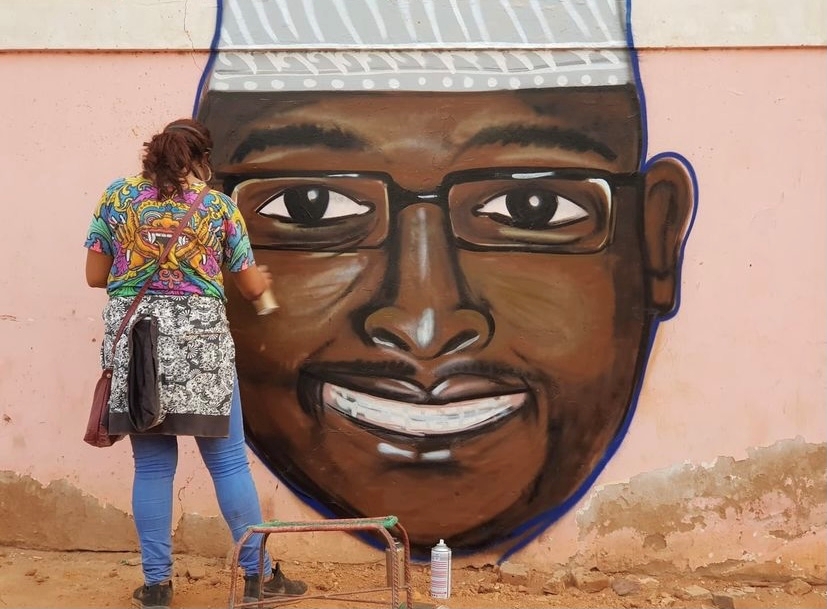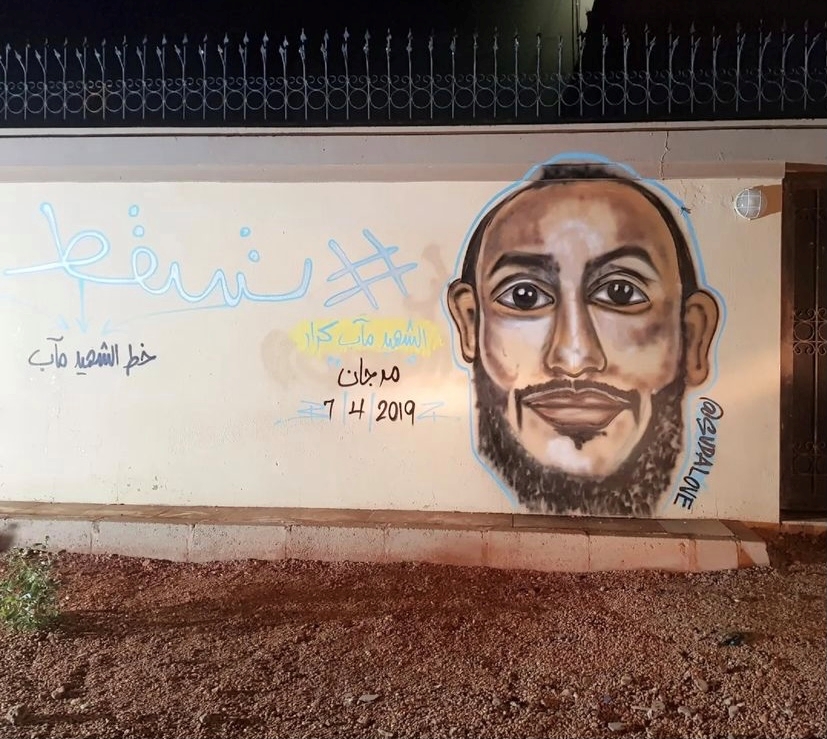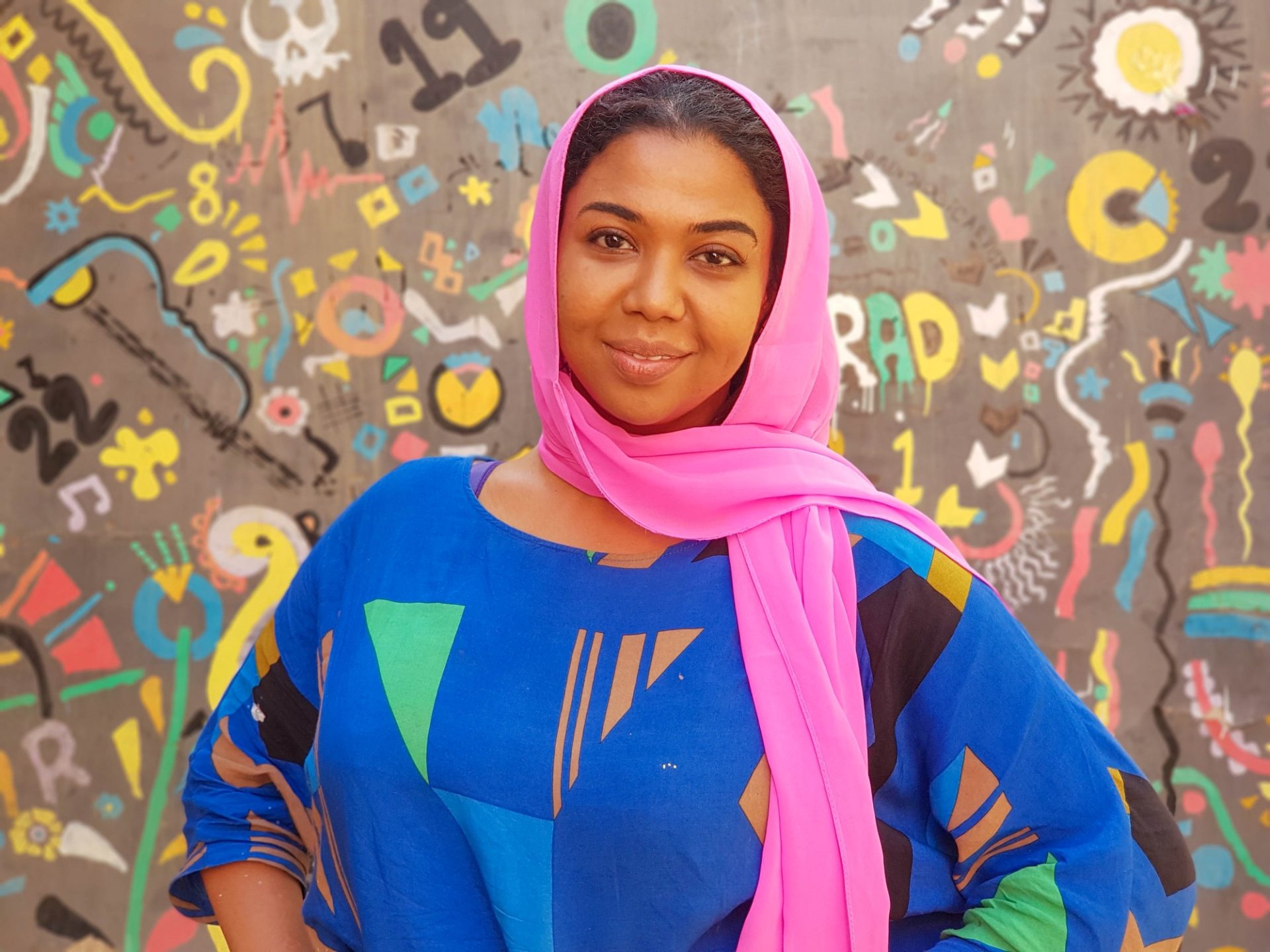Street Art is a Platform to Interact with People
Assil Diab, a Sudanese visual artist, graphic designer, and graffiti artist based in Qatar, is perhaps the most visible socially active artist who responds through art to the Sudanese conflicts and creates awareness of the issues at hand. She was also one of the speakers at the Education City Speaker Series and spoke at length on how street art helps her connect to the general public.
While in Qatar, Assil Diab’s art is more creative with branding and promotional graffiti, her work in Sudan is groundbreaking and heroic with her artworks stirring emotions as they question the atrocities inflicted on the Sudanese.
“During the protests of 2019, I travelled to Sudan to help support the protests by starting the Martyrs Graffiti Project to honour anti-government protesters killed in the uprising by creating around 40 graffiti portraits on the exterior wall of the martyr’s homes,” she says.
Assil’s first solo graffiti project was with SDI Marketing in Qatar where she was commissioned to paint at the Renaissance Hotel in Qatar for Cirque Eloize’s Press Conference. One of her great achievements that she is proud to note is of the occasion when she joined French-Tunisian artist El Seed in a Calligraffiti Project to paint one of the largest graffiti projects in the world in the Salwa Road Tunnels in Doha.
Assil was also one of the speakers at the Education Speaker Series who spoke on the topic: Art during Conflicts.

One of the projects that Assil completed: documenting the martyrs killed during the President of Sudan Omar al-bashir’s regime. This is Martyr Mahjoub Al-Taj, a medical student at Al Razi College who was killed by the security forces during the December 2018 revolution protests. Image Courtesy: @sudalove
SCALE finds out more about her views on art, the rise of street art and conflict, and how they are interlinked.
SCALE: How has art given you a voice? How do you think your identity has been reflected through art?
ASSIL: Art has always given me the opportunity to vocalise my thoughts and feelings, and street art especially allows me to connect with the general public. I appreciate the accessibility of streets, it’s for everyone to enjoy regardless of age, gender, or socioeconomic status. It gives me a platform to get to interact with people and learn more about various communities and people of different backgrounds, religions, and cultures. Since I’m exposed to so many people through this form of art, I believe my identity is a combination of all these various personalities I interact through every day and my character remains a work in progress because I learn something new from the streets every day.
SCALE: What impact does art create in shaping stories during conflicts?
ASSIL: Art can serve as a representation of economic, social, and political influence on the community. Art is recognisably controversial, and the nature of art is a social experience that constantly proves all societies have a limit to what they will accept as art. The representation of art can vary between communities according to the traditions and religion based on that society. However, when art refuses to perform this function, it quickly becomes resistance art.
SCALE: Now that you have been in this field for a few years do you think graffiti art is finally being appreciated as part of the art world and for its inherent creativity?
ASSIL: Definitely. I’ve seen how street art has evolved from a rebellious form of creativity to a reputable and appreciated art form. We see that with artists such as Banksy whose works are now world-renowned and become more than just drawings on streets walls, making their way into the homes of art collectors, museums, auctions houses.
I have seen the number of street artists evolve in both Sudan and Qatar which is something that didn’t exist a few years ago. People are now using it in revolutions as well as more business and people are requesting commissioned murals and artwork in their homes, offices, or even on canvas.
SCALE: A work that has been your most favorite?
ASSIL: I don’t think I have a favorite piece of art; however, I am truly in awe of El Seed’s work. He was my inspiration for getting into the field and I’ve always enjoyed Arabic calligraphy and to see such intricate and colorful designs that reflect my native language is enthusing to me.

This is the face of Martyr Maab Hanafi, a photographer, who was killed while participating in the April 6 Million March protest. Image Courtesy: @sudalove
SCALE: How has art helped you cope with conflict in your country? What was its role in expressing human feelings during such times?
ASSIL: Hundreds of protesters were killed in anti-government protests in Sudan in 2019, and more in 2016 and 2013. Sudanese people are not aware of who most of these martyrs are, meaning they and their protests risk being quickly forgotten, and their families not receiving the support they need. Separately, Sudanese women were not encouraged to engage in artistic or entrepreneurial pursuits.
During the protests of 2019, I travelled to Sudan to help support the protests by starting the Martyrs Graffiti Project to honor anti-government protesters killed in the uprising by creating around 40 graffiti portraits on the exterior wall of the martyr’s homes.
The Project’s mission was to commemorate each and every one of the martyrs of Sudan with a mural, to serve as a constant reminder to the Sudanese people of how and why they died. Martyrs Graffiti also aimed to help empower local women to be more creative and to put the Sudanese art scene on the map.
The artworks are a reminder to the people of Sudan that these people died for them. We have to remember the martyrs because they went out to protest for us.
SCALE: How has Qatar nurtured your creativity?
ASSIL: I’ve lived in Qatar for a little less than 30 years. I’ve seen it fully develop to what it is today and I flourished along with it. Qatar is where I had the chance to enroll at VCUQ in Qatar Foundation, where I received my formal art education. I took up a BFA in Graphics Design and also got a scholarship to study a semester in the main campus in Richmond, Virginia as an exchange student which really broadened my horizons and at the same time heartened my connection to home and to my community. I later transferred to the Richmond campus and graduated in 2011.
During my time there I was able to meet so many inspirational people from students to professors and everyone in between.
All images have been sourced from the Instagram handle of Assil @sudalove.




